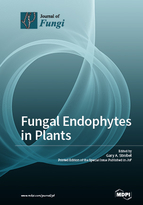Fungal Endophytes in Plants
A special issue of Journal of Fungi (ISSN 2309-608X).
Deadline for manuscript submissions: closed (30 April 2018) | Viewed by 85313
Special Issue Editor
Interests: endophytic fungi; secondary products
Special Issues, Collections and Topics in MDPI journals
Special Issue Information
Dear Colleagues,
This Special Issue will be dedicated to fungi that are found as endophytes in the world’s plants. Among many other things, it will cover newly-discovered fungi that are endophytic. The role of the endophyte in the plant microbiome is of emerging interest, and aspects of it will be included. Secondary products of endophytes are receiving renewed attention as some have been found that are potential fuels, antibiotics, antioxidants, and anticancer agents, as well as immunosuppressive compounds. Aspects concerning the physiological/biochemical/role of the endophyte, as it relates to its host are also of interest. It goes without saying that this volume will also include aspects of the genetics and epigenetics of endophytes, especially as they relate to the host genome or the production of valuable and important products. Finally, any new developments occurring in this field will also be included.
Prof. Dr. Gary A. Strobel
Guest Editor
Manuscript Submission Information
Manuscripts should be submitted online at www.mdpi.com by registering and logging in to this website. Once you are registered, click here to go to the submission form. Manuscripts can be submitted until the deadline. All submissions that pass pre-check are peer-reviewed. Accepted papers will be published continuously in the journal (as soon as accepted) and will be listed together on the special issue website. Research articles, review articles as well as short communications are invited. For planned papers, a title and short abstract (about 100 words) can be sent to the Editorial Office for announcement on this website.
Submitted manuscripts should not have been published previously, nor be under consideration for publication elsewhere (except conference proceedings papers). All manuscripts are thoroughly refereed through a single-blind peer-review process. A guide for authors and other relevant information for submission of manuscripts is available on the Instructions for Authors page. Journal of Fungi is an international peer-reviewed open access monthly journal published by MDPI.
Please visit the Instructions for Authors page before submitting a manuscript. The Article Processing Charge (APC) for publication in this open access journal is 2600 CHF (Swiss Francs). Submitted papers should be well formatted and use good English. Authors may use MDPI's English editing service prior to publication or during author revisions.
Keywords
- Endophytic fungus
- Endophytes
- Endophyte-Host Interactions
- Secondary products and their uses
- Endophytes as the plant microbiome
- Epigenetics and endophytes







